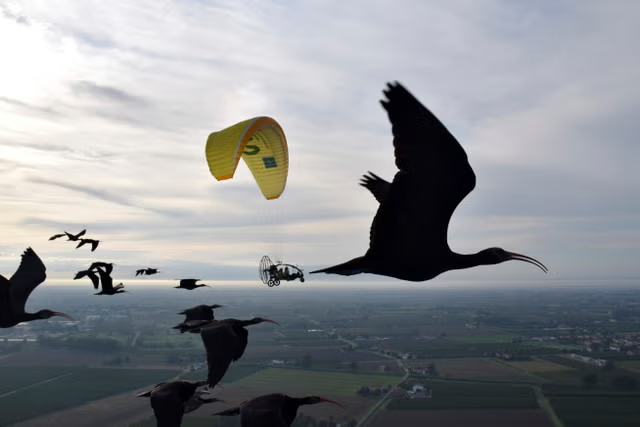A comet heading towards our planet might be visible to the naked eye in the next few months.
The comet, named Comet C/2023 A3 (Tsuchinshan-ATLAS), was first discovered in early 2023, and has been zooming towards the inner solar system ever since.
Despite fears that it may be disintegrating, the comet is still intact, and was spotted by NASA's STEREO-A spacecraft on the other side of the sun.
"It continues to brighten steadily, and is now up to magnitude 7," Qicheng Zhang, a researcher at the Lowell Observatory, told spaceweather.com. "It also continues to display a very robust ion tail. There are zero signs that the nucleus is disintegrating."
Comet Tsuchinshan-ATLAS (C/2023 A3) is currently heading towards the sun at about 180,000 mph, after which it will swing back out of the solar system, passing close by Earth on its way. It is thought to have come from the Oort Cloud on the outer edges of our solar system, with an orbital period of about 80,000 years.
It will reach its closest point to the sun, also known as its perihelion, on September 27, and pass its closest point to Earth on October 12 at a distance of around 44 million miles.
"A comet is like a dirty snowball," Keith Horne, a professor of astronomy at the University of St. Andrews in Scotland, previously told Newsweek. "Comets and planets both orbit the sun, but unlike the circular orbits of planets, comets follow highly elliptical orbits."
"As they approach the sun, the solar radiation heats the comet's surface, evaporating dust and ice."
The comet is expected to reach a brightness of magnitude +6, according to Sky Live, but others forecast that it may become much brighter.
A magnitude with a smaller positive number or larger negative number means an object is brighter: the full moon has a magnitude of -13, while Venus has a magnitude of -5. Objects with a magnitude of 6 or smaller are just about visible to the naked eye, but comets often aren't visible to the naked eye until they reach a magnitude of about +3.
"The comet will brighten to magnitude +4 ± 1 at perihelion on September 27, to a daylight peak of -3 ± 1 near inferior conjunction on October 9, and subsequently produce a quite possibly 20+ degree dust tail visible under dark skies (Oct ~19) before fading away," said Zhang
"It reminds me of the very similar Comet Arend-Roland in 1957, whose combined tails extended several tens of degrees for a few days. I consider a comparable display to be by far the most likely scenario for mid-October."
However, others predict that the comet won't quite be bright enough to be visible to the naked eye.
"A3 (Tsuchinshan-ATLAS) is now sort of on the brightening line to get mostly as bright like predicted, although my own projection shows it peaking more like magnitude +4 to +5 because the trend line is a bit south of the optimum line..." astrophotographer Eliot Herman told Universe Today. "So it will not be (naked eye) visible at brightest, but...it will be a fine telescopic comet (or 'camera comet') kind of like P1 Nishimura. That is what I am thinking unless it shatters or splits. I think it is going to fall short of imagination, which is about the norm for comets."
Despite the comet still remaining intact, there is still a chance that the comet may disintegrate before or during its perihelion at the end of September, as suggested in a recent paper by Zdenek Sekanina, an astronomer and comet expert at NASA's Jet Propulsion Laboratory.
"Based on its past and current performance, the comet is expected to disintegrate before reaching perihelion," Sekanina wrote.
Do you have a tip on a science story that Newsweek should be covering? Do you have a question about comets? Let us know via science@newsweek.com.
Disclaimer: The copyright of this article belongs to the original author. Reposting this article is solely for the purpose of information dissemination and does not constitute any investment advice. If there is any infringement, please contact us immediately. We will make corrections or deletions as necessary. Thank you.



